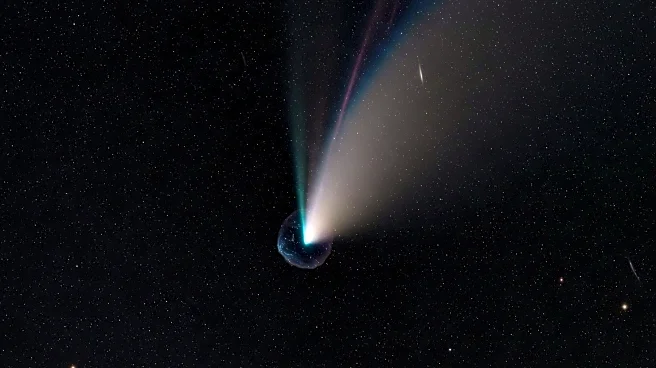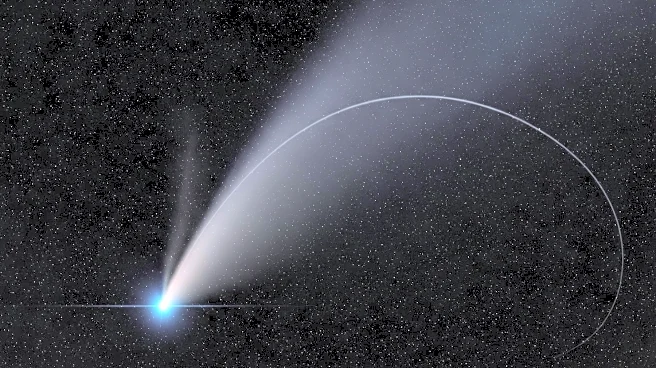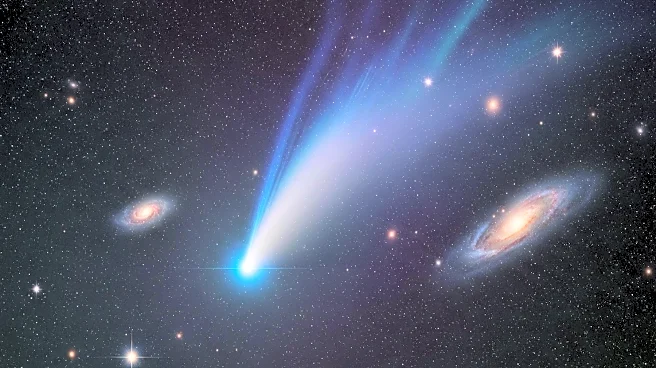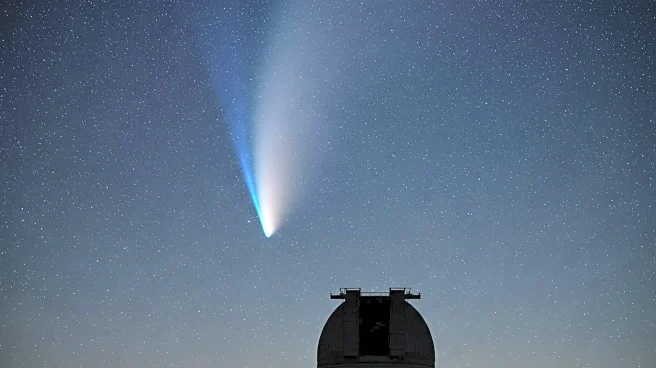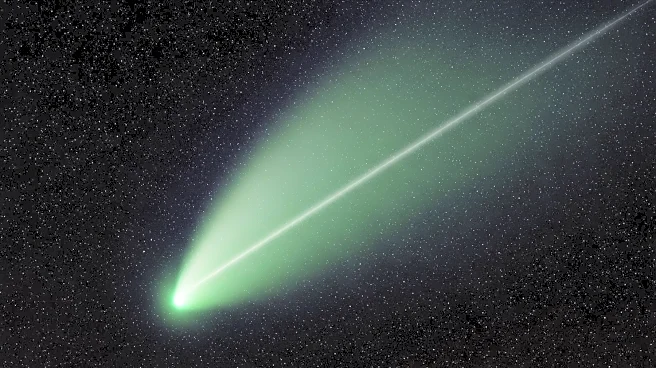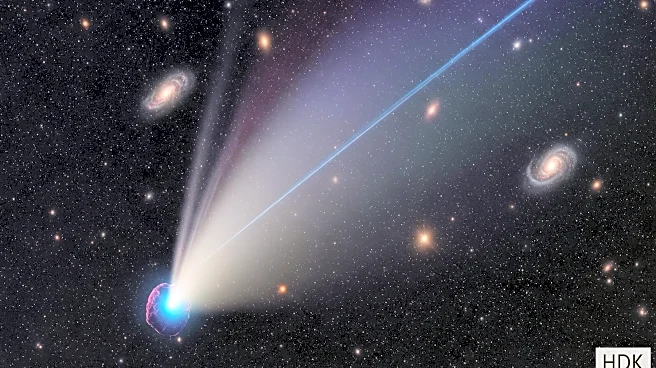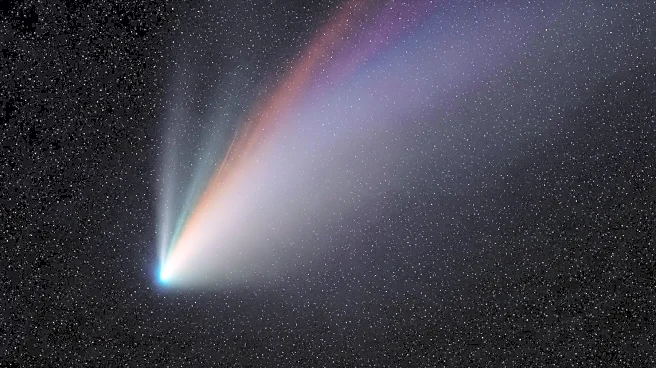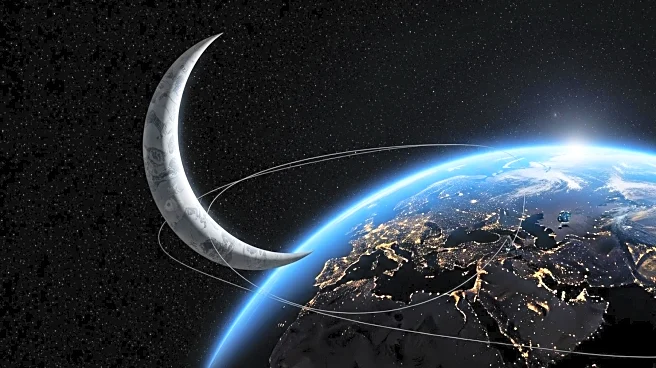What's Happening?
Comet C/2025 R2 (SWAN) is expected to become visible to the naked eye in October 2025 as it makes its closest approach to Earth at approximately 25.10 million miles. Discovered by Ukrainian amateur astronomer Vladimir Bezugly, the comet is currently visible with telescopes and binoculars in the Southern Hemisphere and may become bright enough for unaided viewing in the Northern Hemisphere. The comet's orbit around the Sun is estimated to take 1,400 years, making this a once-in-a-lifetime event.
Why It's Important?
The visibility of Comet C/2025 R2 (SWAN) presents a unique opportunity for both amateur and professional astronomers to study a celestial object that may hold clues about the formation of the Solar System. The event is significant for public engagement, as it encourages people to observe and learn about comets and their role in the cosmos. The comet's appearance may also inspire educational programs and public interest in astronomy, fostering a greater appreciation for space exploration.
What's Next?
As the comet approaches, astronomers will continue to monitor its brightness and trajectory, providing updates to the public on optimal viewing times and locations. Observers are encouraged to use telescopes or binoculars for the best view, although the comet may become visible to the naked eye. The event may lead to increased interest in cometary research and the potential for new discoveries about the origins of the Solar System.

